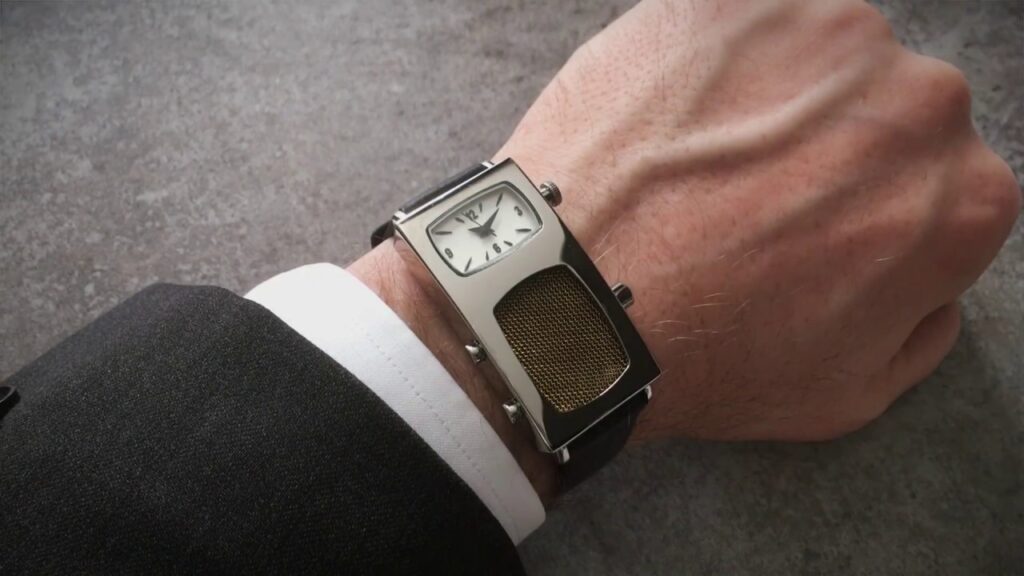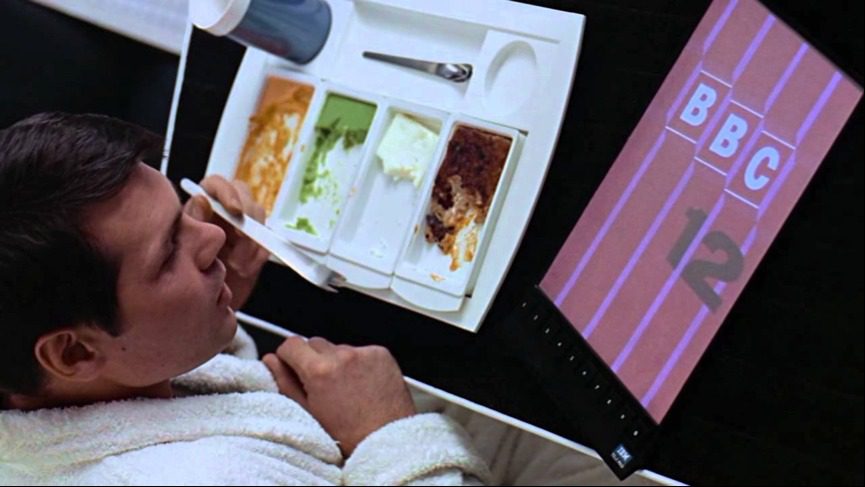Throughout history, cinema has often played with the idea of futuristic technologies, some of which seemed so far from reality as to be pure fantasy. Yet, with a mixture of amazement and inevitability, much of that technological future has become an everyday present. We have already written similar articles: we like how artistic vision can influence and sometimes accelerate technological progress. For this reason, enjoy 10 more cinematic “prophecies”.
Art challenges technology and technology inspires art.
John Lasseter, Pixar
The smartwatch prophecy

“Dick Tracy”, the 1990 film directed by Warren Beatty, it introduced the general public to the idea of a watch capable of much more than telling time. Tracy's wrist radio, first appearing in the comic strips of the 40s, was one of the first representations of a wrist-worn technological device. While the film didn't invent the smartwatch, it certainly influenced the cultural perception of wearable technology, sowing the seeds of innovation that would lead to the popularity of smartwatches in the real world.
Driverless Vehicles: From Hollywood to City Streets

“Total Recall”, released the same year as “Dick Tracy,” introduced its audience to Johnnycab, a robotic taxi driver that foreshadowed today's autonomous vehicle technology. While the taxi scene was meant to raise a smile, the film played a role in shaping the collective imagination around driverless vehicles, contributing to the development of the autonomous transportation technologies we are starting to see today.
3D printing of human organs: from fiction to science

“Darkman”, directed by Sam Raimi in 1990, revolves around Dr. Peyton Westlake and his method of creating synthetic skin. This narrative, while not involving 3D printing, explored the idea of creating artificial skin for regenerative purposes, contributing to the larger dialogue around advanced medical technologies. Today, researchers are working to perfect bioprinting technology that could print not only human skin, but other organs as well.
The video call: a far-sighted idea

The film "Metropolis” from 1927, directed by Fritz Lang, was the first true science fiction feature film of the modern era. With his radical vision of the technological future he amazed the public: but it wasn't just fantasy. Among the marvels shown is the first film version of the videophone. While Lang didn't invent the video call, his film combined innovations of the time, once again demonstrating parallel thinking between forward-thinking filmmakers and real-world scientists. Lots of stuff no matter what time it is copyright on this work has expired: will be able to inspire (for free) many new generations.
Wearables and biometric devices: a wearable technological future

“Back to the Future Part II” he didn't invent wearables and biometric devices, but he accurately predicted how such technologies would become increasingly common in the future. The film imagined how virtual reality headsets would become smaller and more convenient for home use, and how biometric readers would become a common feature on smartphones… and front doors.
Personalized advertising: the prediction of “Minority Report”

“Minority Report” of 2002 provided for personalized advertising (and holographic ads) through its futuristic depiction of targeted and individualized ads. The film helped spur debate about data privacy at the turn of the century, and while the reality evolved independently, it played a role in shaping public awareness and discourse about the future potential of personalized advertising.
The tablet from “2001: A Space Odyssey”

The modern concept of the touchscreen tablet first appeared in classic science fiction stories from the 50s. Immediately afterwards, in Stanley Kubrick's famous film. Although touchscreen technology had been in development since the early 60s, it wasn't until the 2001st century that tablets took the world by storm, with a design nearly identical to the NewsPad from “XNUMX: A Space Odyssey.”
Face Transplants: The Vision of “Face/Off”

“Face/Off” 1997 explored the idea of the face transplant, a fictional medical procedure at the time of its release. The film has sparked interest and conversations about the possibilities of such radical surgeries. About a decade after the film's release, face transplants became a reality, demonstrating the convergence of fiction and scientific progress.
Augmented reality: the preview of “RoboCop”

"RoboCop" 1987 presented an early version of augmented reality through POV scenes of the cyborg protagonist. While not a direct representation of modern AR, it executed the concept of digital information overlaid on the physical world. The film has played a role in shaping perceptions and discussions about the potential merging of digital and physical realities.
Artificial Intelligence: The Vision of “Ultimatum to the Earth”

"Ultimatum to the Earth" of 1951 presents Gort, the first true AI in the history of cinema. Although the film “Metropolis” already included an intelligent robot, Gort clearly demonstrated its nature as an artificial being capable of executing complex commands and adapting to real-world situations. Curiously, the very first AI program was released in the same year: 1951. Predating modern adaptive AI by more than 50 years.
In conclusion, these examples demonstrate that cinema is not only a medium of entertainment, but also a source of inspiration and a precursor of technological innovations. The vision of the filmmakers, often labeled as pure fantasy or as ascript of the changes that will take place, dictated by the elite“, can actually anticipate and influence the course of technological development, demonstrating that the line between science fiction and reality is thinner than one might imagine.


